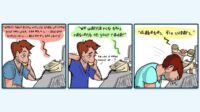With all the regulations and documentation and cultural requirements you have to absorb into your daily practice, changing the language you use to describe patients may seem like the last straw. However, People First Language, based on The Americans with Disabilities Act, encourages practitioners to put the person before their disability, in words and in action. Here’s what you need to know.
Just as the ADA made discrimination against people with disabilities illegal, it was also the driving force behind changing our language. That law, and others before it, helped us to understand that people are not “handicapped”, they are “disabled”. It was an important change of language that was more than just semantics. It was perhaps the first baby step toward changing many other attitudes and opportunities for those living with disabilities in our society.
The goal of People First language is simple: to continue to remove barriers for those with disabilities and connect them to their surroundings. Healthcare practitioners can do this in practice, and also in writing in the patient’s medical record. It is yet another way to practice respect for the patient.
Check out some examples of People First language versus “non-people first” language and they are instructive, from Allnurses.com.
Medical record entry, non-People First Language
This example is clinically accurate, yet devoid of compassion.
Stroke patient, 61-years-old arrived to the floor at 801 am. He is myopic and has a cancerous history. He is handicapped with left-sided weakness of upper and lower extremities and emotionally disturbed. The patient will likely be wheelchair bound during the hospital stay.
Medical record entry, People First Language
This example is clinically accurate, as well as compassionate and insightful.
Mr. Jones, a 61-year-old male with recent stroke symptoms arrived to the floor at 801 pm. He wears eyeglasses and has a history of prostate cancer. The assessment revealed left-sided weakness of upper and lower extremity. He is tearful when discussing his condition. Due to the weakness, he will be using a wheelchair when out of bed.
People first language avoids objectifying the patient. Instead it uses respect and compassion to relay insightful records of their care. Some examples of changed language include:
Non-people first language:
- Autistic boy
- Suffers from…
- Deaf girl
- Stroke patient
- Wheelchair bound
People First language:
- Boy with autism
- Has cancer
- The 5 year old girl who is hearing impaired
- The patient recently suffered a stroke
- The woman, or Ellen, uses a wheelchair
Remember, people with disabilities are just like those without disabilities. They want the same things; to be called by their name, to be recognized and respected. They want to be a valued human being, not invisible.
A good piece of advice was given from a man who has been a paraplegic for more than 25 years. He is a highly placed executive in a global investment company. His job is to develop inclusionary practices for the corporation, and teach employees that relating to those with disabilities is not a time for fear; it’s a time for human connection. He said;
“Someone once said to me, ‘I don’t know what to say to someone in a wheelchair’. My answer was ‘How about ‘Hello’? Or, how about ‘Would you like a cup of coffee?’ It’s that simple to make the barriers evaporate”.
The same goes for charting care for disabled patients. You may have to document their disability, but don’t let it become a barrier that rises between the providers who come behind you and the patient. Instead, use charting to convey understanding and insight about the patient’s strengths and weaknesses as you would anyone else, in order to improve patient care.
Patient First language isn’t another module to be checked off. It really is as simple as remembering that those living with disabilities are human beings, with the same daily needs as the provider caring for them. Relating to them as a person who is traversing this life with us can make all the difference.




